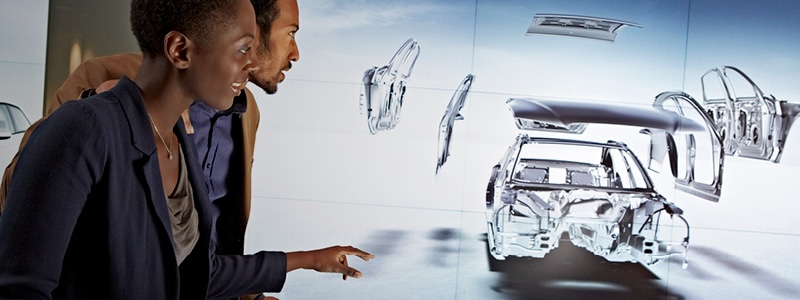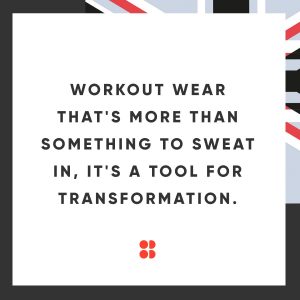
Most shops are optimised for commerce - every aspect of their layout constructed along the precise and careful lines of retail psychology. We're used to that, almost numb to it - and so surprise can become a tool. When you walk into a shop and there are no price tags, no sales talk, no high profile bargains flagged up, you start to ask questions. “Is this even a shop? What's happening to me?”
Something strange is happening. At the outer limits of retail, confronted with a world in which commerce has become a soulless process of clicks and browses, brick and mortar premises have to offer more than a mere opportunity to purchase. Experiential retail drags customers out of their comfort zone and away from their desk by making the actual purchase almost a secondary consideration.
Here are four examples of innovative retail experiences - and how their approaches can change the way businesses think about their events and exhibitions.
1. Madeworn
Madeworn isn’t a store. In founder and operator Blaine Halverson’s words, ‘Madeworn is an appointment-only destination with unprecedentedly personal customer service’. There are customers. Everything is for sale. A transaction, at some point, takes place. There is something recognisably like retail afoot here - but it’s a destination.
Halverson’s creation is a workspace, a retail space, and a live event venue. It has a vintage, handmade, deeply unprofessional feel, from the dirt floor on up. The aesthetic - cabinets, wood, machines and deep browns - is in the same territory as brands like AllSaints, but it goes deeper and further than shelves that look like crates and a few typewriters in the window. There are no stacks of identical goods, and everything’s for sale - even the harmonium - at ad-hoc prices. It’s an eccentric, anachronistic kind of retail.
What can event organisers or stand exhibitors learn from this? Don’t be afraid to do your own thing. Be exclusive. Be intimate. Be bespoke. Show that care and attention have gone into what you’re offering and celebrate that for its own sake, not as mere justification for a high price tag.
Bring your own priorities and let your attendees bring theirs. Offer a space in which a handful of carefully targeted people can synchronise their needs, and take an interest in what their peers have to offer. At some point, there might be an exchange of value, in which there’s room to negotiate. This old-school kind of capitalism isn’t the norm for corporate events, but it’s perfect for low-volume high-value goods or services that can afford to be truly special.
2. Sweaty Betty
Gyms that sell a range of active wear and associated products are nothing new. Sweaty Betty innovates by going the other way, bringing the gym into the retail space and offering classes in pilates, martial arts, yoga, barre - whatever the brand can make work in the space available.
It reframes the shop as a regular happening - somewhere people go without the intent to browse, maybe purchase, and then get out. Somewhere that’s visited as a commitment to improve yourself, your body - and, OK, your wardrobe.

Sweaty Betty is the oldest retail experience we’re discussing here: it’s been in business for ten years now. Duration - activity over time - is the key to its success, and the reason it’s made our list. It succeeds because it builds habits, loyalty and community (a class being, ultimately, an experience you commit to having regularly, with a peer group), and appeals to ambition and the desire for personal growth.
For events, this showcases the importance of returning visitors and establishing a reputation - present hands-on experiences and valuable take-homes that improve affairs for your attendees, and people will come to an exhibition or event because they know you’ll have something great for them.
3. Late Night Chameleon Café
This eco-aware venue in London is another by-appointment-only retail space, co-existing with:
- an art installation (that happens to be a product showcase)
- a library of out of print and first edition books and vinyls
- a bar and club space
Like Madeworn, the LN-CC thrives on exclusivity, but it presents a different set of values. The space prides itself on being ‘progressive, innovative and conscious’, and it prides itself on connecting each item in its collection back to the brand’s original conception. LNCC is curatorial - it collects and presents rarities that express a set of values, and they happen to be for sale.
LN-CC’s lessons for events are layered. Put your values up front; show that you can walk the walk by showing people why you’ve made the choice you have. Beyond that, there’s a lot to be said for carefully selecting both what you offer, and to whom you offer it, especially if - like LN-CC - you’re banking on a brand that expresses luxury and rarity that not everyone can afford.
The fact that LN-CC calls itself a café is telling too: the space is ‘for’ socialising with people on your wavelength, and you might happen to buy something while you’re in there. Putting that comfort and social function up front creates a different kind of exhibition space - one that’s not about aggressive promotion, and that could offer a welcome respite from the fatiguing trade show experience.
4. Refinery29’s 29Rooms
Online publisher Refinery29 blends retail and the event at a higher pitch, effectively hosting an exclusive exhibition for 29 selected partners. Each partner sponsors and assembles an interactive room that encourages guests to create something - recording their own original songs with boxing gloves wired to synthesisers, for instance - and there’s an opportunity to pick up Refinery29 merchandise while you’re there.
29Rooms succeeds because it makes an abstract business - a global multimedia publisher targeting young women - into an actual place that embodies the business’ values and relationships. That’s the major take away in events terms. The 29Rooms concept shows that a business without tangible products can still present an exciting, engaging, enjoyable experience, and link that experience to a brand and its offering. The important thing is to be creative: to look at your relationships within and beyond your industry, and how you can turn those relationships into something interactive, fun, and a little bit whimsical.
Hopefully, these innovative experiences have started you thinking about what you can do differently with your events - what you can offer that’s more than just another trade show stand. To try your ideas out - or to get some more inspiration - take our exhibition stand design tool for a spin.
Subscribe and stay up to date
receive essential emails.


